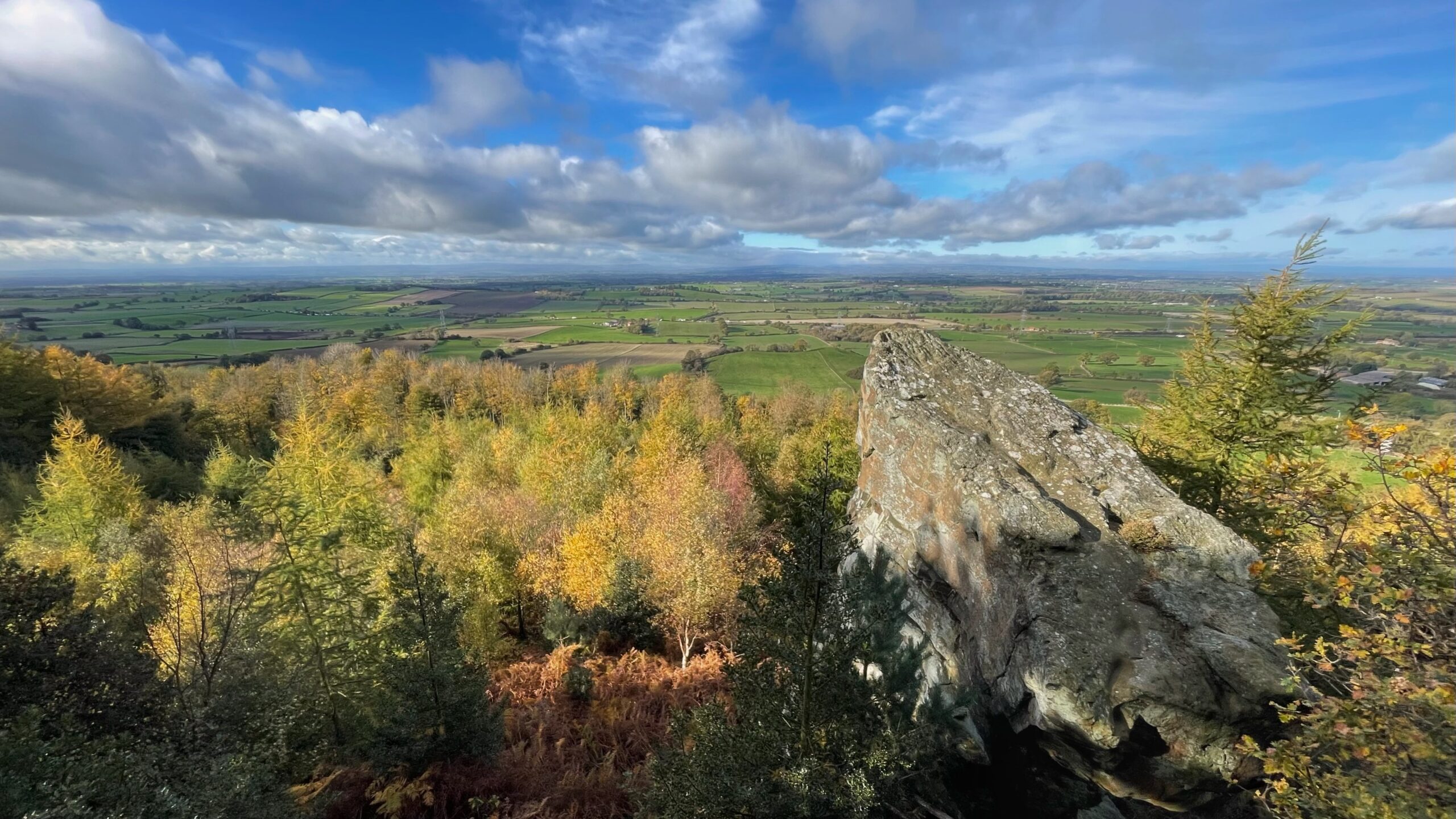About a mile north of Over Silton, on the steep flank of Thimbleby Banks, stands a curious mass of stone known as the Hanging Stone. It is a great angular block of coarse grit, so boldly poised that it seems to hover in mid-air. Were it not hidden by the thick wood below, one might spend a puzzled hour wondering why it has not long since tumbled into the valley. The ascent lies behind it, and though the rock rises highest at the front, it leans backwards to meet the hill of equal height.
The summit, shaped uncannily like the sole of some giant’s shoe, measures about eighteen feet in length. It rests delicately upon narrow supports, as if testing the earth’s patience. A pity the top is not level, for it would have made a splendid altar for those ancient folk who preferred to worship on the wind-bitten shoulders of mountains.
From this perch the view could be vast, if the trees did not jealously guard it. Northward lie the villages of Thimbleby and Osmotherley; beyond them, the ruins of Mount Grace will be hidden below the shadowed slopes of Arncliffe. Further still, Cleveland and the Durham uplands stretch into a pale haze. To the west, the ridges of Teesdale, Swaledale, and Wensleydale form a rugged barricade, with the faint shape of Ingleborough rising like a watchful sentinel on the far horizon. Southward, the Vale of Mowbray opens in boundless calm.
At the small farm of Nunhouse, resting quietly in the plain below, legend insists there lies a bull’s hide stuffed with gold. Whether any man will ever dig it up is another matter. In any case, the imagined peace of the place is broken often enough by the sharp crack of gunfire from the nearby clay pigeon range—a rude reminder that even the most tranquil corners of England must endure the sound of man amusing himself.

Leave a Reply